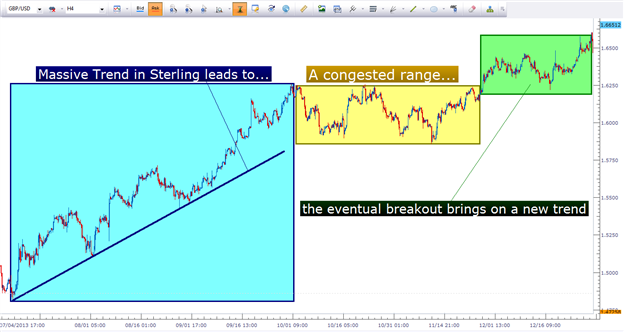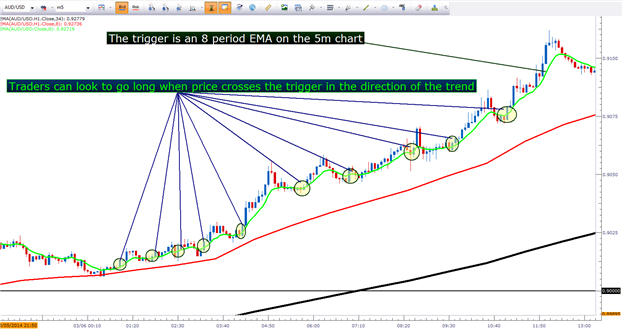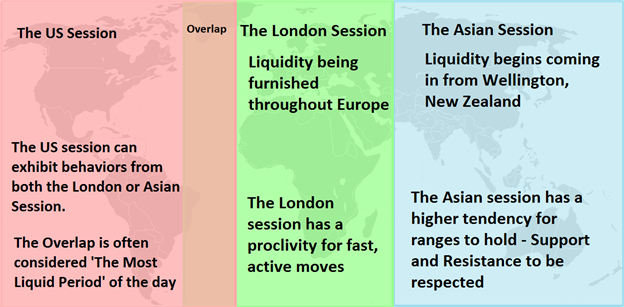Talking Points:
- Traders are often best served by having a well-thought-out plan.
- We look at the what, how, when, and why of the trading plan below.
Regardless of what you’re doing in this world, it often helps to have a plan. The harder the task, the more helpful a well thought-out plan can be.
A plan is practically a necessity for anyone with the courage and the capital to speculate in markets. In this article, we’re going to look at a template for a day-trader’s trading plan. We’re going to use the same model shared in the article, How to Build a Four-Point Trading Plan, but we’re going to focus this plan specifically on trading short-terms (day-trading). If you’d like a more detailed trading plan, we shared this type of template in the article, The Trader’s Plan.
The What
This is the portion of the plan where the trader defines the type of activities they want to perform in the market. Because this is a plan built for short-term traders, the primary options to be decided upon are the market condition to be focused on and the amount of risk that will be taken on each trade and each day.
We discussed the three primary market conditions in the article, The Life Cycle of Markets; and short-term traders can choose to focus on any of the three conditions.
Markets display three different types of conditions; and traders should focus their strategy on one

Taken from The Life Cycle of Markets
But another important component for short-term traders to add here is risk amounts. Traders can list how much they’re going to risk on any individual trade idea, as well as their maximum risk in a day.
So, for example, traders can list that they’ll risk .5% of their account on any one trade, while allowing themselves 5% for the entire day. So, if 5% of the trader’s equity is lost at any point, all trades are closed and greener pastures are sought tomorrow.
This type of model gives the trader 10 attempts, and if 10 consecutive trades get stopped out (hitting the 5% threshold), activities for the day are stopped.
This way, if a trader is having a really bad day and can’t seem to hit water if they fall out-of-a-boat, they have a safety mechanism to ensure that this one bad day doesn’t turn into a career-altering event.
The How
This is where the trader documents and defines their strategy. This is probably the portion of the trading plan that will get the most attention, and take the most time to complete.
The key to remember here is that there isn’t just one way to do this. There are no holy grails, or ‘can’t miss’ strategies, so don’t worry about trying to recreate the wheel here.
I shared my scalping strategy in the article, How to Trade Short-Term. The strategy is incredibly simple in that it only uses a few moving averages along with price action in an effort to prevent The Number One Mistake FX Traders Make. The image below depicts the entry protocol of the strategy, and you can certainly check out the article if you’d like more information on the full strategy:
Entry protocol taken from How to Trade Short-Term

Created with Marketscope/Trading Station II; prepared by James Stanley
But just because this is my strategy, it doesn’t mean that it’s the only way that a market can be traded short-term. Another popular option is to look at trading ‘swings’ or short-term reversals in price.
We discussed this style of trading in the article, Three Ways to Trade Support and Resistance, and we further focused on the entry protocol (albeit for longer-terms) in the article, How to Catch Swings in the Forex Market.
Regardless of how a trader is looking to speculate in a market, longer-term support and resistance levels should be a part of the strategy. These price levels can assist with grading market conditions, or managing risk for short-term trend traders; and they can be extremely important for entries in range and breakout-related strategies.
Regardless of how one is trading, they are best served by being aware of the longer-term levels in the market. Confluent support and resistance levels are also of extreme importance, as they can see order flow change for multiple reasons.
The When
This is the portion of the plan with which the trader sets their ‘working hours.’
Since the FX market is open 24 hours, the ability (and desire) to jump into trades or positions is a constant temptation. If a trader has a good morning, and they see that there are some especially attractive opportunities later on that night, they might have a hard time passing them up.
But in reality, the FX market can trade pretty differently from one session to the next, and for the day-trader or scalper these differences can be enormous; so much so that short-term traders are often best served by choosing the most amenable time-of-day to employ their strategy.
We covered the difference in market session in the article, Trading the World. The image below covers some of the key characteristics of each of the major trading sessions:
Time-of-day can have huge impacts on a market’s price action

Taken from Trading the World
From the image above, we can see that volatility is usually highest during the ‘overlap’ period when prices are coming in from both London and New York market centers (approximately 8-11AM Eastern Time).
For traders executing trending or breakout-related scalping strategies, this would be the time of day that could present the most opportunities.
On the flip side, volatility generally decreases in the Asian-trading session (which was called The Best Time of Day for FX Traders in our Traits of Successful Traders series). If a speculator is looking to implement a short-term range strategy, this could be more ideal than the more volatile London or US sessions.
The Why
This last portion of the plan is the motivation. This is where you can list the reason(s) that you want to become a better trader.
The simple act of writing down your goal can make that goal a very real thing. I realize this may sound corny, or like ‘new-age’ type-of-thinking; but trading is not easy. Traders have to learn how to lose properly; they’re going to face losing and drawdown periods that can be psychological torturous. These periods can make it difficult to get excited about opening up your platform each morning to look for new trades. This is the reason that traders fail; it’s not because profitability is impossible, it’s just that it might not be as easy as that person had initially hoped.
End your trading plan with your goals, and let those goals drive you through the difficult periods so that you can find and prosper in greener pastures.
--- Written by James Stanley
To join James Stanley’s distribution list, please click here.
Before employing any of the mentioned methods, traders should first test on a demo account. The demo account is free; features live prices, and can be a phenomenal testing ground for new strategies and methods. Click here to sign up for a free demo account through FXCM.
James is available on Twitter @JStanleyFX
Are you looking to take your trading to the next level? The DailyFX 360° Course offers a full curriculum, along with private, weekly webinars in which we walk traders through dynamic market conditions using the education taught in the course.
Would you like to trade alongside seasoned professionals throughout the trading day? DailyFX On Demand gives you access to DailyFX Analysts during the most active periods of the trading day.
Would you like to enhance your FX Education? DailyFX has recently launched DailyFX University; which is completely free to any and all traders!
We’ve recently begun to record a series of Forex Videos on a variety of topics. We’d greatly appreciate any feedback or input you might be able to offer on these Forex videos:




